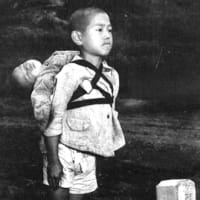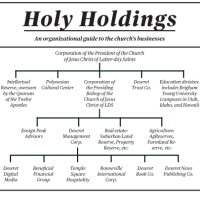(前回は ブリガムの正体見えたり?! その13の3 2013-10-10 21:38:06 )
この"ブリガムの正体見えたり?!"シリーズ、なんとか、続けてこれてよかったです。たまWEB、ある程度真相に迫れたと思ってましてね。まぁ、このシリーズに限らず、ブログという発表の場があって、誰か彼か、古くは掲示板の時からでしょうか、読んでると思うと励みにもなって、んで、時間的には、だいぶかかってて、内容は浅くても、真相求めての、浅学非才を省みずの、たまWEBとしたら、上出来というもんすよ・・・・
さて、その14、ダメ押し的となるか、ヤングの最後は、ヒ素を盛られてあの世へ行かされたという説。前に、内容なしで、その出典、ちょっとだけ触れましたかぁぁ・・・・
「当時の毒殺の噂のことを書いてるのは、サミュエル・W・テイラー(1907-97、小説家、映画台本作家。父は、ジョン・W・テイラー(1858-1916、使徒、多妻婚廃止に反対、破門に)、祖父は、ジョン・テイラー管長(1808-87))
」
(まいったで御座候。 前半 2011-08-26 22:07:06 )
今回も全然訳してなくてぇぇ、どなたかぁ、訳、お手伝いしたい奇特なお方は御座りませぬかぁ??
英文魚拓と超簡単に触れるだけで、今日のところも、堪忍してたもれ。
ブリガム・ヤング管長(June 1, 1801 – August 29, 1877)は、翌10月総大会で、名誉の退位を行って、息子ジュニア(使徒)に、管長職を譲位、つまり、世襲制を目論んでたというのが一つですね。それまでの一年間、大会での役員幹部支持の時、使徒会長という言葉を使わず、全員(12)、使徒と呼んでたり(先任順位を無視、否定の意図)。二つ目は、当時、老齢に入った多妻婚者で、健康延命目的のためか、若い娘を娶ろうとする風潮が見られたという話。ブリガムの多妻の中には、年頃の娘を持つ者もいたようで、その娘、ブリガムの子なのでしょうか、兎も角、それを嫌っていた多妻の一人はいたということで、その女性が、ブリガムに近づくことが出来て、毒を入れたと。毒の入手は、世襲制を阻止しようとした人たちを通じて・・・・ブリガムは一人の妻(正妻)の子たち、3人を使徒に公に、また、プライベイトに召して聖任してるわけで・・・・他の妻たちは、よく扱われなかったというのも・・・・ある妻(以前は、ジョセフの多妻の一人)の子は、5人とも夭逝とか(殺されたのでは?? 残酷! 継承を目論んだ側には、邪魔になる、事実はそういうものなんでは??)。
当時、デゼレト新聞では、死因を盲腸炎の悪化と発表、が、毒殺の噂が多く聞かれたと。
ブリガムの死後、ほぼ教会全財産が、ジュニア(使徒)らに継承されることとなり、次の管長となるジョン・テイラー他たちが、破門すると脅して、どうにか、ジュニアらから教会財産を取り戻したんだとか、そんな話もあったか。
いやぁぁ、ブリガム一派・・・・世襲制での教会乗っ取り継続はかろうじて回避か・・・・そのまま行ってたら・・・・
英文魚拓
FAMILY SECRETS ON BRIGHAM’S BOW-OUT
Taylor further reports that a physician requesting anonymity–amd whose grandfather had attended Young in his final hours–admitted to him that it “was known in his own family that Brigham died of poison.”
Taylor also reports that this physician “also told me that he had talked with the wife of Apostle John A. Widstoe, who was a Young, and she said that fact that Brigham died of poison was well known in her family.”
_____
YOUNG’S EFFORT TO PERPETUATE FAMILY POWER: THE REASON BEHIND HIS UNCEREMONIOUS SEND-OFF
Taylor argues that Young could well have been poisoned by disgruntled Mormon conspirators unenthused with Young’s suspected plans to have his own sons succeed him as Mormonism’s prophet:
“[It is a] possibility that Brigham had planned to form a Young family dynasty to rule the church. T.B.H. Stenhouse had accused him of this in the book, ‘Rocky Mountain Saints,’ evidence being that Brigham had secretly ordained a son, John W. Young, as an apostle, when John W. was a boy of 10.
“Subsequently, in 1864, [Young] ordained two more sons, Brigham Young, Jr. . . . 28, and Joseph A. Young, 30″– facts, says Taylor, that were “confirmed in the internal press by Reed C. Durham and Steven H. Heath in ‘Succession of the Church Presidency,’ Salt Lake, Bookcraft, 1970. Also by [the LDS ] Church Almanac, 1975.”
Taylor further explains the basis for the suspected poison plot:
“The significance of this action is that [according to the Mormon system of the prophet replacement] the senior member of the Quorum of the Twelve Apostles would succeed to the office of Church President upon the death of the incumbent.
“However, if this was Brigham’s plan, it backfired. The Quorum of the Twelve was outraged on learning of the secret ordinations of the boys, and only one of the three [Brigham Young, Jr.] was accepted into the Twelve.
“However,” Taylor continues, “by 1877, the last year of Brigham’s life, he was accused by the ‘Salt Lake Tribune’ of planning to abdicate in favor of [Brigham Young, Jr.]. . . .
“The Gentile press had freely predicted that at the [upcoming] dedication conference [of the Mormon St. George Temple], Brigham would abdicate in favor of [Brigam Jr.]. The ‘Tribune’ was so sure a change of leadership would take place that it dubbed the event the “abdication conference.”
“The ambiguous ranking of Apostle John Taylor was another evidence that abdication might have been planned. Brigham had succeeded to the church presidency by reason of being president of the Quorum of the Twelve. Yet for the past three years, when Taylor was senior member of the Quorum, he was pointedly sustained at conference as a ‘member of the Twelve,’ rather than its president.
“Brigham hadn’t abdicated at the St. George conference, very probably because of the recent execution of John D. Lee, scapegoat of Mountain Meadows 20 years previously, and the sensation caused by his ‘Confessions,’ written after he felt betrayed by Brigham in receiving the death sentence. . . .
“The nation-wide uproar at this time could have caused Brigham to remain in control, had he planned abdication at St. George. The ‘Tribune,’ however, predicted that he would abdicate in favor of [Brigham Young, Jr.] at the next conference, in October. But Brigham Young died 29 August. . . .”
How did the senior Young possibly attempt to gurantee his his family’s continued control of the Mormon throne? Taylor explains:
“[Brigham Young] could have controlled succession to the presidency only by personally stepping down in favor of his selected replacement. Dead, the matter of succession was beyond his control.”
_____
FINGERING THE CULPRIT
Taylor lays out the details of the last days of Young’s agonizing death, proposing in the process who may have been responsible for the dastardly deed:
“It is a fact that Brigham and several other Brethren in Salt Lake, upon arrival at St. George for the April conference, had been felled by sudden attacks of violent purging and vomiting. . . . Were the Brethren victims of bad water, tainted food, or, we must ask, had something been slipped into their food?”
Taylor , of course, opts for the last possibility. As to the guilty party, he writes:
“Who done it? Well, who had free access to [Young's] heavily-guarded compound? Who would have given Brigham his medication in the small hours, and sat with him throughout the night? Who would be admitted without question to the sickroom at all times?
“The answer is inevitable: members of his immediate family, and in particular the nurses, about whom the ['Desert News'] ‘Last Moments’ say nothing. Yet with ‘vomiting and purging being almost continuous’ the first few days, the patient needed a great deal of attention.
“The women of the household would have been busy with bedpans, with changing sheets, with keeping the patient clean and as comfortable as possible.
“In looking for someone who would have been in position–and with a motive–to have put arsenic in Brigham’s lunch on Thursday, and, very possibly, to have also given additional doses at the bedside during the week of his sickness, we must examine those who were very close. We must zero in on a suspect who was entirely above suspicion. . . .
“[T]he guilty person had to be someone living in the Lion-Beehive House complex. . . .
“We must remember that there would have been an impelling motive for such an act. . . .
“Who had the most to gain?[:] . . . [T]he menage of Brigham’s own family and close relatives. It might be appalling to suggest such a scandal in the family of a sainted figure. However, it is a fact that one murder in five is committed by a member of the immediate family, and almost half of all murders by relatives, family, or close friends. The Young family had its tensions, as the subsequent brouhana over the settlement of Brigham’s estate proved. The complications of plural marriage were astronomical.
“Who of this select group would have both opportunity and an immediate, impelling and overwhelming motive? . . .
“Call her ‘Ms. X.’ Inasmuch as charges were never filed, I cannot name her now. However, if you really do want to know, her identity can be found among the pieces of this ‘whodunit’ which lie waiting in available material for any interested scholar, historian, western buff, ‘whodunit’ fan, trivia freak or windmill filter who wishes to fit the puzzle together. My cards are on the table. I’ve had no access to confidential sources or sensitive materials. No safes were opened to me.
“What is important is not the actual name of ‘Ms. X,’ but her relationship to Brigham Young. In an association of a dozen years, her initial dislike had grown to intense loathing. But what drove her to the corner drugstore for a little calomel salve, please, Mr. Godbe, and oh, yes, a dime’s worth of arsenic to get rid of the gophers?
“Motive:
“The threat to her daughter, a beautiful girl of 17. At this period in Deseret , when an old man began losing his steam, he was dealt a young girl as a plural wife to revitalize him. Brigham did the dealing; his permission was essential. While a special exaltation in the hereafter was promised a nubile maiden who married an old man on earth, to her mother it was a monstrous situation which made her flesh crawl. When an appeal to Brigham failed, her only recourse was to eliminate the man in charge.
“Modus operandi:
“The sugar bowl. Brigham liked to eat with members of his menage. How, then, to single him out for a lethal does without endangering others? Sugar was a prized commodity in frontier Utah . The members of the household sweetened their tea with honey. Only Brigham and special guests used sugar. He also liked a cup of tea in midaftemoon. Again, the sugar bowl, the contents mixed with a tasteless white powder.
“In the event more than one dose was required, because Brigham was ‘a tough s.o.b.,’ consider the tea served to settle his stomach during his week’s sickness, and also the medication, a mixture of brandy and milk. There was ample opportunity.
“Whether or not the identity of the culprit was suspected I have no way of knowing, though her unhappy fate subsequently would have indicated that she was tormented by conscience or harassed by family rumor.”
_____The Possible-Purposeful-Poisoning Death of Brigham Young . . .
http://exmormon.org/phorum/read.php?2,1051678,1051678#msg-1051678



















※コメント投稿者のブログIDはブログ作成者のみに通知されます